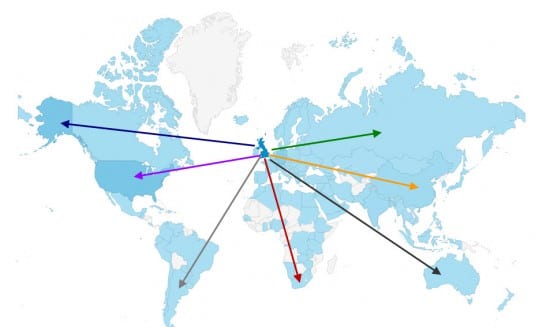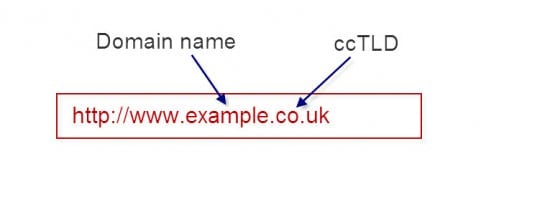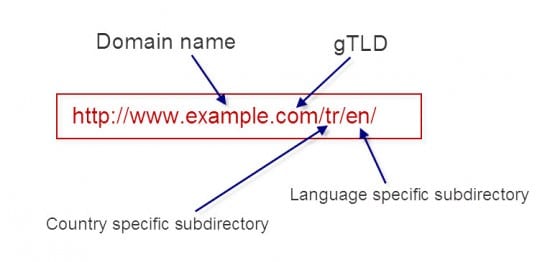A briefing on the options to improve your visibility with International SEO
For any company that trades overseas, or hopes to expand into foreign markets in the future, International SEO is a big factor in gaining awareness of their brand, products and services.
When you need to market your website in multiple locations, there are a number of different options. However, the SEO implications of each approach are often overlooked by many organisations, leading to underwhelming organic search performance in each locality.
It is therefore essential that marketers are aware of the pros and cons that accompany each method of structuring international sites, before making a decision relating to the expansion of their website to target additional locations. In this article I will explain the different options for marketers to gain visibility in different countries and the pros and cons of each.
Targeting audiences in other countries
Often, the most effective way of targeting a website for local audiences in other countries is to use your existing website to create country and/or language specific pages. This is always dependent on the size and primary purpose of your site, and could therefore range from a small number of localised pages to additional versions of an entire site that feature localised content.
It is not always appropriate to recreate an entire website in another language or to target a different location. This decision will depend on a number of factors, and should be carefully thought out.
For instance, a Turkish landing page may initially interest Turkish-speaking customers, but if the rest of the website is in English, this targeted offering will be wasted. Equally, it will not be enough to just translate your English language pages for a different target market.
Users in different countries will have different search habits, and the grammatical structure of their language may lead to different spellings of each keyword, even if the same language is spoken in both countries.

With this in mind, it is important for businesses to research every target country thoroughly prior to creating content to target each location.
I’d always suggest using native speakers of a language to carry out keyword research for each location, before producing copy and content for localised pages.
Businesses that decide to recreate their entire sites to target additional locations should thoroughly review their sites before expanding their site. Any lingering structural issues with the original site will be multiplied as the site is replicated and redeveloped to target additional markets.
I’d suggest carrying out an audit of any 404 errors before 301 redirecting these pages to current and relevant content on the site wherever possible.
How you will target your customers, how your content will be presented, and how the content on your website will be organised are the first issues you’ll need to consider, as they will shape the type of website you need to provide your target audience.
This often depends on the different languages used by your target audience in each region, and the resulting website types can be grouped into the following three categories:
- 1. Multiregional websites
Multiregional sites are designed to target users in different countries who all speak the same language. For example, English speakers in the UK, USA and Australia.
- 2. Multiregional and Multilingual websites
Multiregional and multilingual sites target users in different countries who speak the same language as users in some, but not all of the other targeted countries. For example, the UK & USA, France, Austria and Switzerland.
I’m aware that this may be starting to sound a tad boring - International SEO isn’t an overly attractive subject like mobile marketing, social or even email marketing.
However, your websites URL structure has the potential to impact the visibility of your website to your global audience than any other marketing activity.
Structuring URLs for a global audience
Both search engines and users consider the URL structure of pages they visit when making judgments and decisions about a site’s relevancy and authority. URLs play an important role in user experience and can give the user important information, from where a page falls within the site hierarchy to topical information about the content.
For search engines, the URL is the unique identifier which is used to catalog the page within the search engine’s index, and a websites URL structure is considered one of the most important and basic elements of International SEO.
Three ways to structure your URLs
Whether a site is multilingual or multiregional, you will need to decide upon one method for separating the different versions of a website. There are essentially three main options for structuring URLs on a global scale:
- Purchase a Country-Code Top Level Domain Name (ccTLD). This is a domain name tied to a specific country – .co.uk is the ccTLD for the UK. For example, http://www.example.co.uk
- Use a Generic Top Level Domain Name (gTLD), with a country (or language) specific subdomain, e.g. http://uk.example.com or http://en.example.com
- Use a gTLD with a country or language specific subdirectory, e.g. http://www.example.com/uk. If you are targeting countries where more than one language is spoken you will need a structure that includes both country and language subdirectories. For example, http://www.example.com/gb/en/ would be used to target English speakers in Great Britain, http://www.example.com/us/en/ would target English speakers in the US, and so on.
I would always recommend that you maintain separate URLs for the content on your site that you’d like to target at different countries or languages. Using cookies to show translated or localised versions based on IP address is often problematic.
These sites are difficult for search engines to index and will not work effectively if a searcher has disabled cookies.
I will now go on to explain the pros and cons of each structure.
Country Code Top Level Domain Name (ccTLD)
The ccTLD is an effective method of geo-targeting (targeting searchers by location) based on domain alone.
Sites such as Adidas make use of ccTLD in their International SEO strategies. The sites http://www.adidas.co.uk/ and http://www.adidas.fr/ use different languages and currencies, whilst also grouping their products slightly differently and displaying different offers.
 The use of ccTLDs is often recommended by experts as the preferred method for optimising International sites, but is certainly not the only option.
The use of ccTLDs is often recommended by experts as the preferred method for optimising International sites, but is certainly not the only option.
Pros:
- Users trust that a site bearing their country domain will include content that is relevant to their country.
- They are the strongest geo-targeting signal used by Google.
- Easy separation of sites.
- Server location is less relevant as a geo-targeting factor if a ccTLD is used.
Cons:
- Some ccTLDs have strict conditions imposed on their use and are not available to all businesses. (This may be a benefit to businesses that can use the ccTLD as it reinforces trust.)
- More expensive – you’d need to purchase numerous new domains.
- Subject to availability.
- Link building would prove much more difficult as each country or language has a totally separate site, with a lower overall domain authority.
Subdomains
Another structural option would be to use a gTLD with different subdomains to create totally separate websites. This method of organising international information is used by Yahoo. For example, http://uk.yahoo.com/ and http://fr.yahoo.com/ are examples of structuring international sites via separate subdomains.

Pros:
- Easy to set up.
- Different subdomains can actually be hosted on different servers in different countries, which is viewed as geo targeting signal by Google and other search engines.
- Sites can easily be separated.
- Effective way to establish sites as separate identities while still retaining the overall corporate branding.
- Provide the ability to target different languages in conjunction with subdirectories. For example, http://gb.example.com/fr could target French speakers in the UK, whilst http://gb.example.com/en could be used to target English speakers in the same country.
Cons:
- Users may not recognise geo-targeting from the URL alone, like they would with a ccTLD.
- Subdomains are treated as separate sites by search engines. Again, this means that each subdomain will need a separate link building campaign.
Websites such as Ryanair use subdirectories to target users by both language and country. http://www.ryanair.com/ie provides English content for the Irish market, whilst http://www.ryanair.com/en serves English content for French users.
Pros:
- Possibly the simplest method to set up.
- Low maintenance – as files are usually stored on a single server.
- All inbound links will be pointing to one domain, which then has greater authority.
- The simplest way to target multiple languages in a single country.
- Possible to geo-target each subdirectory to a specific country using webmaster tools, as I will go on to explain.
Cons:
- It may well be harder for users to recognise geo-targeting from the URL alone.
- Using a gTLD across multiple locations is a missed geo-targeting opportunity (which can partly be overcome using webmaster tools targeting).
- It’s often hard to decide what should be included on the http://www.example.com homepage – however this is almost always the content for the country the business operates in (their head office location).
There are obvious pros and cons to each of the aforementioned strategies. However, as long as a logical structure is chosen and used consistently across each site, businesses will have a good platform to target each location.
Geo targeting in Google Webmaster Tools
If you decide to use either subdomains or subdirectories to structure your International sites, you’ll be able to target them at each chosen country using webmaster tools.
To target a website at the US market, you would set 'United States' as a geographic target in webmaster tools. This is essentially informing Google that you’d like this site to be served in the SERPs (search engine results pages) displayed by www.google.com (US).
The following image displays how you can set a particular country as a Geographic target in Google Webmaster Tools:

Avoiding duplicate content: Hreflang tags
HrefLang is a HTML tag that goes within the section of a web pages source code, which helps Google crawlers understand that certain pages, and folders on a website are targeted at a specified country.
To avoid duplicate content issues, you will need to use the rel="alternate” (Hreflang) tag so that Google understand that various English language versions of your site are alternate versions used to target different locations, rather than duplicates.
To do this, you’ll need to place a HTML link element in the header of each page of each version of your site you create.
For example, if you had a site to target users in the UK, and chose to use a subdirectory to target users in the US, you’d need to add the following code in the HTML <head> section of the UK site:
<link rel="alternate" hreflang="en-us" href=" http://www.example.com/us" />
In this scenario, you would have two URLs targeted at users with the same language but in different locations. However, it is always a good idea to provide a generic URL for geographically unspecified users.
For example, in the aforementioned example, you would have specific URLs for English speakers in the UK (en-gb) as well as the USA (en-us), but you may want all other (location unspecified) English speakers to see your generic English (en) (UK) site. In this case you should specify the generic English-language (en) page for searchers, which could well be the UK version of the site.
To annotate this cluster of pages using HTML link tags in the <head> of each page, you’d need to use the following snippet of code:
<link rel=”alternate” href=” http://www.example.com/” hreflang=”en-gb” />
<link rel=”alternate” href=” http://www.example.com/us” hreflang=”en-us” />
<link rel=”alternate” href=” http://www.example.com/” hreflang=”en” />
The amount of pages you’d need to annotate will depend entirely upon the number of different versions of your site you intend to create. For example, you may plan to create a version of your site to target both English and native language (French) users in France:
<link rel="alternate" href="http://example.com/fr/fr" hreflang="fr-fr" />
<link rel="alternate" href="http://example.com/fr/en" hreflang="en-fr" />
<link rel="alternate" href="http://example.com/us" hreflang="en-us" />
<link rel="alternate" href="http://example.com/us" hreflang="en-gb" />
<link rel="alternate" href="http://example.com/en" hreflang="en" />
Summary
The way in which you choose to structure your website to target a global audience primarily depends on the resources available to you, and it is worth noting that each structure has the potential to perform well in the organic search results. As long as a logical structure is used consistently, href lang markup is utilised, and each site is geotargeted using webmaster tools (where appropriate), you’ll have a great platform to target your site at users in multiple locations.

Thanks to
Ben Wood for sharing their advice and opinions in this post. Ben is the SEM Manager at
Nottingham based agency Hallam Internet. You can follow him on
Twitter , connect on
LinkedIn or
Google+.







 Thanks to
Thanks to 


